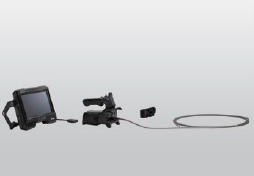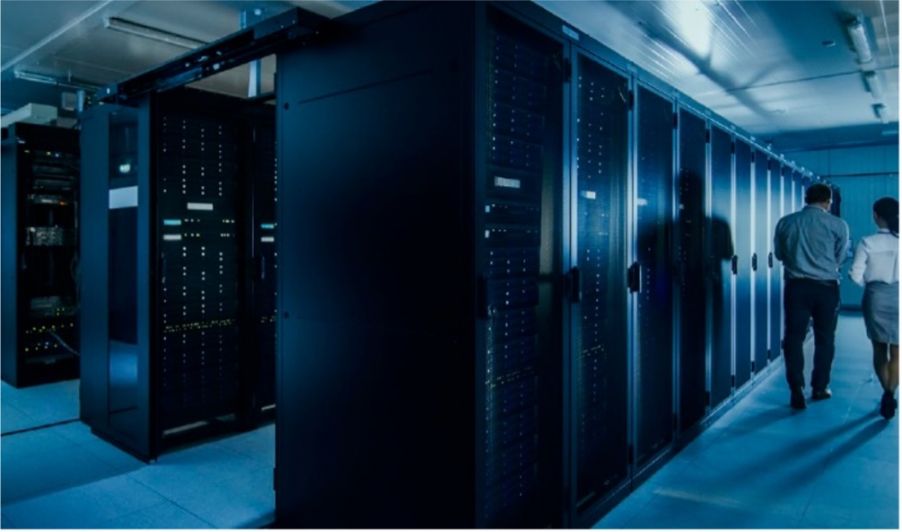Videoscopes are valuable inspection tools in many industries. Commonly used in the aviation, power generation, and wind sectors, videoscopes also play an instrumental role in maintaining a functional data center.
Data centers must maintain cool servers to ensure that systems do not overheat. An overheating data center can lead to system malfunctions or failures. Work downtime or loss of data and equipment from a system failure can significantly impact critical business operations.
In routine data center maintenance, technicians use videoscopes to inspect the heating, ventilation, and air conditioning (HVAC) systems that keep these mission-critical servers cool. With optimal videoscope tools, technicians can detect damages such as stress cracking, pitting, and deposition.
Tips to Select Optimal Videoscope Inspection Tools for Data Center Maintenance
To select the optimal videoscope inspection tools for data center maintenance, you must consider several parameters. Here are some tips:
1. Determine your required insertion tube length.
Choose your required scope length based on the section of the HVAC or chiller system being inspected. Our scopes come in 4 mm (0.16 in.), 6 mm (0.23 in.), or 8.5 mm (0.33 in.) diameter options with various options for scope length. The available scope lengths range from 2–30 meters (6.6–98.4 ft) to support the inspection of various pipes and tubes.

Insertion tubes for industrial videoscopes come in a range of diameters and lengths
2. Use a videoscope that provides bright, clear images.
Bright, clear imaging is another important aspect of data center HVAC inspections. When looking for damages inside tubes and pipes, you will need the optimal amount of brightness.
If the image is too bright, a high amount of reflection will occur, leading to unclear images. In contrast, too little brightness will yield dark images with a higher probability to miss the defect. Our videoscopes feature our PulsarPic™ image processor that actively adjusts the brightness to maintain that perfect balance.
3. Select tip adapters to optimize your view.
Identify your remote visual inspection needs and know the constraints of the inspection. Then select the tip adapter that provides the best view.
Our videoscopes have multiple options for tip adapters. Our tip adapters are split into two main categories: direct or side. With these two types, two specifications dictate the functionality of these tips.
First is the field of view (FOV). Put simply, the FOV is the angle of view, or how much of the target object you can see at once. For example, the largest FOV we have for our tip adapters is 220 degrees. Commonly used in pipe inspection, this wide-angle tip adapter enables you to see the front and sides of a pipe at the same time due to its large angle of view.
The second specification is the depth of field (DOF). In short, the DOF specifies the range of distance that the scope achieves focus.
4. Use an optimized insertion tube to easily access hard-to-reach spaces.
A well-designed insertion tube can ease videoscope inspections of hard-to-access or deeper targets within HVAC or chiller systems.
Our insertion tube has a Tapered Flex™ design, where the insertion tube is more flexible near the tip and its rigidity increases toward the base of the system. This design makes the inspection process easier and more efficient.
As you begin to insert the insertion tube, the scope provides the flexibility to maneuver through elbows and areas with limited space. Once you use a significant amount of the scope’s length, the extra rigidity at the end makes it easier to push the scope.
Recommended Videoscope Accessories for Data Center Maintenance
Practical accessories also help the scope reach challenging areas within data center HVAC or chiller systems. Recommended videoscope accessories include:
Flex and stay tube: A pliable yet rigid tube that can be shaped freely. Easily bend the tube in any shape to reach an object for remote visual inspection.
Centering device: Holds the insertion tube centered inside a pipe or tube. Available for scopes with a diameter of 4 mm (0.16 in.), 6 mm (0.23 in.), and 8.5 mm (0.33 in.)
Flexible guide tube: Increasing the insertion tube’s rigidity, the flexible guide tube assists you in inserting the scope to reach deeper areas. Available for 7.5 m (24.6 ft) and 10 m (32.8 ft) scopes.
Guide head: Attach the guide head on the scope tip to ease its passage over the joints of a pipe, reducing the friction against the pipe’s inner surface. Available for 20 m (65.6 ft) and 30 m (98.4 ft) scopes.
Push rod adapter: Mounts the push rod onto the scope. The combination of the push rod and the dedicated adapter enables the scope to pass over elbow joints to reach deep into a pipe. Available for 20 m (65.6 ft) and 30 m (98.4 ft) scopes.

Videoscope accessories (left to right): Flex and stay tube, centering device, flexible guide tube, guide head, and push rod adapter.
Want to get all the inspection tools you need in one solution? Make sure to check out our visual inspection kits for data center maintenance.
Related Content
Video: Introducing the IPLEX G Lite Ultra-Portable Videoscope
Brochure: Visual Inspection Kits for Data Center Maintenance
Webinar: Essential Videoscope Features for Remote Visual Inspection
Get In Touch




